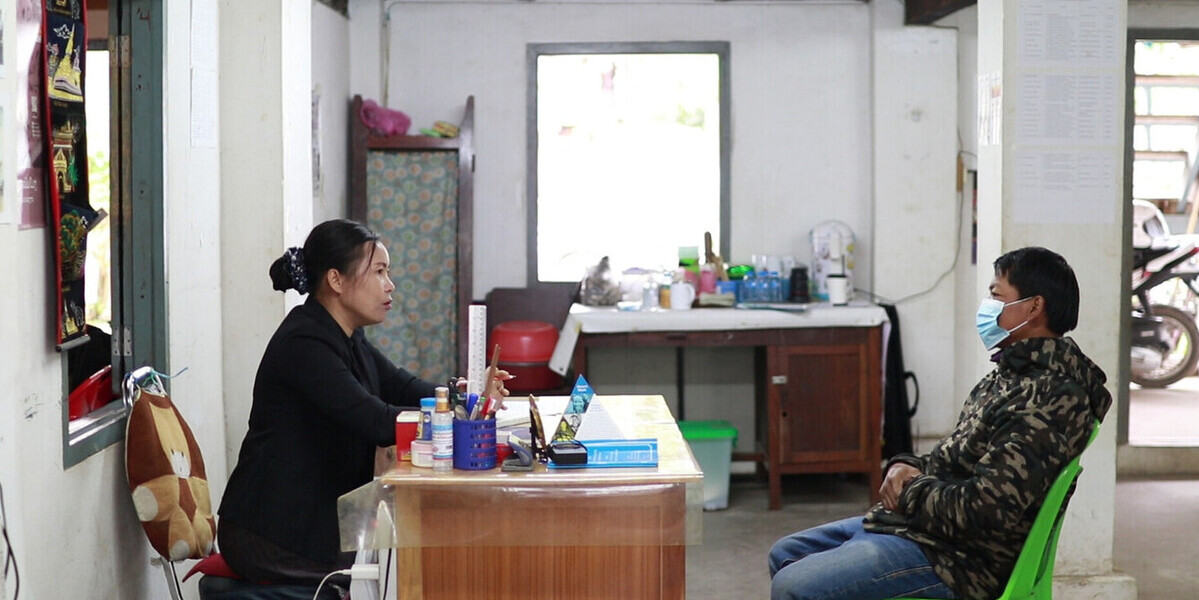Migrating for work, whether abroad or within one’s home country, has become an increasingly important livelihood strategy for millions of people globally. International organisations and governments laud the economic and social benefits of labour migration for households and governments alike. The International Organisation for Migration (IOM), for example, advocates for mainstreaming migration in national development policies.
Labour migration, when successful, can form a significant component of foreign exchange earnings for governments and provide economic security for households. Migrant-receiving states also benefit significantly from labour markets dominated by skilled but cheap migrant workers, most of whom have fewer claims on rights and responsibilities. Sending states, in turn, can benefit from the skills, networks and social capital that migrants often bring back to their home countries.
In response to these perceived benefits, migrant-sending and receiving states have introduced managed migration systems, and private businesses involved in recruiting and managing migrant workers have proliferated. Working in tandem, state and private actors are involved in the recruitment, documentation, training and placement of migrant workers. We are living in an era when labour migration has become a new and powerful development mantra.
Hyper-precarity
Despite the positive spin, the realities of migrant worker exploitation are palpable. Among the ranks of precarious, insecure workers, migrants are often referred to as ‘hyper-precarious’ because, unlike citizen workers, they lack important protections, have fewer rights, may be socially and geographically isolated, and lack information and the necessary language skills to seek assistance and support.
Singapore is a case in point. Around one-quarter of the population at any one time is comprised of transient migrant workers, both male and female, deployed mainly in the construction industry and paid domestic work in private households respectively. Male Workers from India and Bangladesh can accumulate up to US$15,000 in migration debts to relatives, friends and informal creditors who may charge usurious rates of interest.
Even for a worker who does not experience any problems in their migration, it is often almost impossible to pay off debts within the usual two-year contract period. And with wage theft, illegal salary deductions, and workplace fines and penalties extremely common, many return home still carrying a considerable financial burden. Out-migration becomes the norm, driven not by the desire to improve lives and livelihoods but simply in the hope of reducing these debts. The same cycle of debt-driven precarious labour migration can be seen in Malaysia, North Africa and the Middle East.
Female migrant workers in Singapore and neighbouring Malaysia also incur huge debts, in this case usually payable to the recruitment agencies that arrange their work abroad. During the first eight to nine months of her job, a domestic worker will normally not receive any salary at all. After that she will receive a percentage of her salary until her migration debt is fully paid. At the end of her contract, she may only have received full salary for less than half her contract, while recruitment agencies continue to make huge profits through the business of labour supply.
Debt bondage is thus a recurrent concern for migrant workers. It can yoke them to errant employers as they feel unable to leave exploitative workplaces for fear of returning home without having paid off the money borrowed to meet often exorbitant migration fees. One of the cruel ironies of migrant labour exploitation is that migration debts are often accrued in the context of ‘safe migration’ policies and channels, which aim to protect workers by formalising their migration and adding a layer of transparency and formality to work stints abroad. The situation in Singapore mirrors that of many other countries that import migrant labour.
Protocol problems
Migrant workers’ experiences of hyper-exploitation undoubtedly tick the boxes of many International Labour Organisation (ILO) indicators of human trafficking, including debt bondage, threats and intimidation, removal of freedom, withholding of documents and deceptive recruitment. Yet very few of the millions of workers globally who find themselves in these situations are able to avail support as trafficked persons. The question is, why?
Despite these achievements, human trafficking remains a widespread human and labour rights problem
In 2001, the UN Protocol to Prevent, Suppress and Punish Trafficking in Persons, Especially Women and Children came into force in response to human trafficking, including specifically for labour exploitation, sexual exploitation and domestic servitude. It was a significant moment in the global fight against modern-day slavery in all its forms, defining human trafficking and outlining key actions to prevent and criminalise trafficking and protect victims. Globally, 178 countries have now ratified theprotocol and most have subsequently based national legislation and policy responses on its key provisions.
Despite these achievements, human trafficking remains a widespread human and labour rights problem, and many criticisms have been advanced of the ways governments, international and civil society organisations have responded. For one, most states have responded to human trafficking as primarily a criminal justice/transnational crime problem. Ratification of the protocol requires states to develop legislation to criminalise human trafficking. This Is problematic in three main respects.
First, such a requirement is only one aspect of developing effective policies oriented to the protection of victims and prevention of trafficking. Second, the protocol has a particular emphasis on women and children, which has shaped not only responses, but also the overall perception of human trafficking: victims are primarily thought to be women and children, with the sex industry thought of as the main sector. Third, the emphasis is placed squarely on trafficking as a transnational crime. In reality, we know that much, if not most, human trafficking activity takes place within the borders of individual states.

In Singapore, the construction sector is heavily reliant on migrant workers
CREDIT: BERNARD SPRAGG
Beyond these criticisms, there has been significant concern about the ways anti-trafficking responses themselves have compromised the rights of victims, and about how many exploited migrants have been excluded from protection because they fail to fit neatly into the criteria required to formally designated victim status.
Concerns have been raised, for example,that women trafficked into the sexindustry are often forcibly removed in high-profile police operations and detained in facilities under what has come to be described as ‘carceral protectionism’. These types of institutions also often fail to understand the needs of victims, denying them the right to work and earn an income – the key goal for many of their migration.
These shortcomings in the ways human trafficking is defined and addressed have important implications for migrants who experience hyper-exploitation. Many are disqualified from protections, may not be provided with the opportunity to pursue justice (including compensation), and may not be able to remain in the country concerned.
This can also profoundly affect left-behind families, who suffer from the loss of income and remittances from a migrant breadwinner. Returning home in these circumstances can be a fraught process, as failed migrants can experience a sense of shame and/or stigma in their communities. Many suffer the ongoing health effects of labour exploitation, including injury and mental health problems. Although reintegration programmes often form an important part of anti-trafficking responses, the majority of exploited migrants who return home do so undetected and unsupported.
Listening to victims
The case of ‘seafood slavery’ exemplifies many of the problems. Men and boys, predominantly from Myanmar, Indonesia, the Philippines and Vietnam, are increasingly deployed onto fishing vessels operating in distant open waters. Extreme instances of violence, deaths at sea, fraudulent and substituted contracts, excessive hours and dangerous working conditions have been extensively documented.
While many characterise the experiences of these migrant fishers as modern-day slavery, there have been fewer than ten prosecutions of traffickers in the industry globally. Victims remain largely undetected and unprotected.
Behind these failures is a deep, recurring preoccupation with ‘ideal victims’ of trafficking
Tracing these victims as they return to their home countries, I found ongoing relational and health problems, including post-traumatic stress disorder and broken marriages. Even where victims claim compensation or seek justice for their experiences on the fishing vessels, outcomes are disappointing. Compensation is often not paid even when it is awarded. Victims almost always depart again for precarious work opportunities abroad. Services to support reintegration are piecemeal, often delivered by NGOs whose capacity and resources are extremely limited.
Behind these failures is a deep, recurring preoccupation with ‘ideal victims’ of trafficking – women and girls within the sex industry, in particular. Male victims of labour trafficking are all too often treated as less deserving. Like many women trafficked into sectors outside the sex industry, demonstrating agency through the intention to migrate or deserting exploitative workplace often dilutes their claims as victims in the eyes of the state and some NGOs.
Rather than continuing to focus on narrow characterisations of ‘classic’ victims, embracing approaches that value victims ’voices’ and experiences presents another way forward. Facilitating opportunities for, and mediums through which, victims can participate in the production of narratives about trafficking and slavery are a first step. My colleagues and I have adopted this approach in our work with victims of seafood slavery.
Bringing these voices to the counter-trafficking table extends a seat to those who have been standing on the sidelines for far too long. Bringing men and boys, women deployed outside the sex industry and others into a framework of protections and rights is essential to redressing extreme experiences of labour exploitation – and to finally start to fulfil the decades-old goal of preventing human trafficking.










